Report Asserts Plant Being Built In Russia To Make Iranian Drones
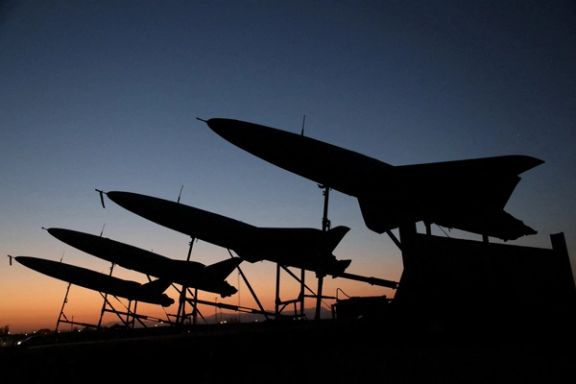
Satellite imagery shows progress in the construction in Russia of a plant that will mass produce Iranian-designed kamikaze drones, a research organization said on Monday.

Satellite imagery shows progress in the construction in Russia of a plant that will mass produce Iranian-designed kamikaze drones, a research organization said on Monday.

US National Security spokesman John Kirby emphasized on Monday that the United States is not seeking a conflict with Iran in spite of an ongoing shadow war with its proxies in the region.
In an interview with Fox News, Kirby stated that in spite of over 40 attacks being carried out on US facilities in Iraq and Syria since the war in Gaza broke out, "We don't seek a conflict with Iran right now".
The US was fast to defend Israel's right to defend itself after the Hamas invasion on October 7, which saw 1,400 mostly civilians killed and around 240 taken hostage to Gaza. The US has vowed to support Israel militarily and since deployed two carriers and thousands of forces to the Middle East as Iran's proxies began to step up action not only against Israel but against US targets.
Kirby mentioned retaliatory strikes, of which so far there have only been three, aimed at deterring further attacks on US military bases in the region. He emphasized that the focus is on inhibiting the capacity of Iran's Islamic Revolutionary Guard Corps (IRGC) to support their proxy groups.
Responding to questions about why President Joe Biden hasn't ordered a direct attack on Iran's key military infrastructure, Kirby stated that the government is currently focused only on targets that hinder the IRGC's support for proxy groups.
When asked about potential actions and whether Biden is waiting for American casualties before taking substantive action, Kirby emphasized the readiness to take retaliatory strikes to protect troops and facilities. He concluded, "We are not looking to escalate, but if they continue to attack our troops and put their lives in danger, we will continue to take action to protect them."
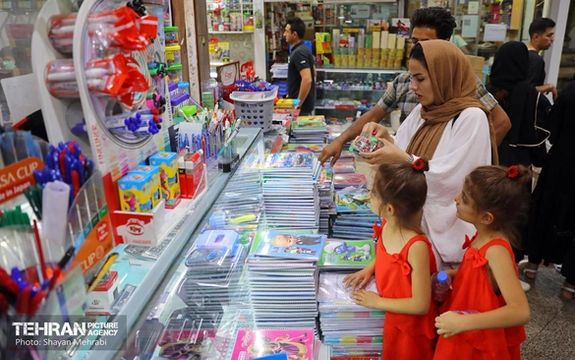
Iran’s fast-declining population growth rate has not improved despite massive budget allocations to a regeneration scheme, a prominent commentator has pointed out.
“The current administration and parliament have spent a minimum of 250 trillion rials ($500m) a year to increase the birth rate, but 25,000 fewer babies have been born each year. [Consequently], every fewer birth has cost 10b rials ($2,000)!!,” Abbas Abdi wrote in a commentary in the reformist Etemad newspaper Tuesday.
Abdi who sarcastically called this one of President Ebrahim Raisi’s “biggest achievements,” said budget allocated to encouraging population growth in the current year, not including sums allocated for the same purpose indirectly, was higher than the country’s development budget in the previous year.
He also pointed out that to cover up its failure, the government delayed releasing birth figures for over six months and then officials only disseminated piecemeal information that nevertheless indicated continuing decline.
Officials’ most recent statements indicate that the population growth rate has dropped to 0.6 percent from 1.23 two years ago which was also much lower than the 4.21 percent in 1984, five years after the Islamic Revolution of 1979. This is why the annual decline in births that Abdi has highlighted becomes more meaningful, since 25,000 fewer babies follows a decades-long trend.
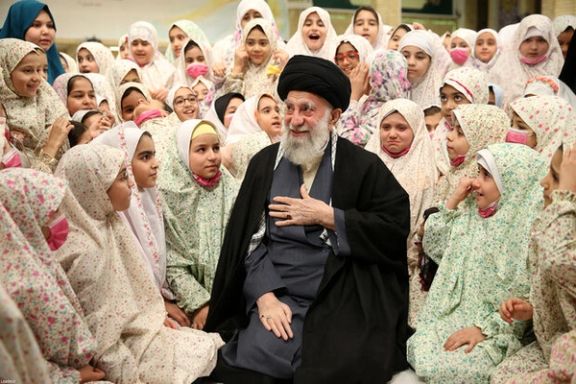
The country’s population has doubled from around 40 million in the early 1980s to 84 million now, but Supreme Leader Ali Khamenei always insists that increasing Iran's population is one of the most urgent duties of the government.
Since 2014, Khamenei has repeatedly said that Iran’s population should rise to at least 150 million by 2050 to avoid having an elderly population.
Responding to Khamenei’s calls, the parliament, dominated by hardliners, passed a law in March 2021 promoting population growth. The law compels government and state entities to encourage marriage and childbearing, enforces penalties for non-compliance, and prohibits any activity promoting birth control. It also bans government health services from providing family planning services, such as contraceptives, vasectomies, and tubectomies. The law, branded as Supporting Family and Regenerating Population Act includes incentives like increased child-benefit payments, interest-free loans, and free land allocations for families with more than three children.
Parliament also passed a measure scrapping routine pre-natal screening for genetic diseases or disability by government health centers but did not impose a ban. In August, however, the health ministry’s food and drug administration announced that it would no longer issue permits for production or imports of screening kits for congenital and chromosomal anomalies including Down Syndrome.
Government family planning programs – including free contraceptives and vasectomies at governmental healthcare facilities opened in the 1980s – were gradually abandoned over the past ten years, even before the approval of the new restriction, with those defending family planning dubbed enemy "infiltrators."
Critics of a population increase policy say that the Islamic Republic has not been able to boost the living standards, with more than 35 percent considered to be living under the absolute poverty line according to official statistics and many more living in increasing hardship despite having multiple jobs. Some academic studies have linked the drop in the fertility rate to the growth in women’s access to education.
Both Iran's Shiite religious establishment and political hardliners have long expressed concerns not only over an ageing population but also a decline of the Shiite population in comparison with Sunni Muslims, who constitute around ten percent of the country’s population.
In April 2014 Ayatollah Jafar Sobhani, a prominent Shiite sources of emulation in the city of Qom, warned that the Saudis were plotting to obliterate the "absolute majority of Shiites in all Iranian cities."
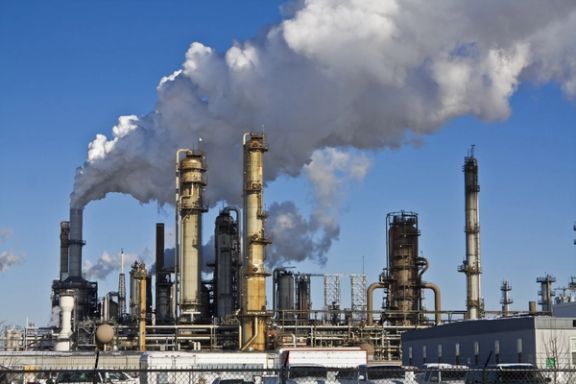
A senior Iranian oil industry official has warned of the detrimental effects of the country’s gas shortages on its oil production.
Erfan Afazeli, the chairman of the Iranian Federation of Petroleum Industry, explained to ILNA that Iran needs to inject gas to its oil reservoirs to maintain the production flow, warning if not, “it will result in significant damage."
He said the necessary measures would help maintain or increase the pressure within the oil reservoir to push the oil towards the extraction wells; and would enhance oil recovery for the oil that would otherwise be left behind, known as Enhanced Oil Recovery (EOR). The process is essential for maximizing the extraction of oil from a field.
“Currently, our oil recovery factor is less than 20 percent,” he said, claiming that “every one percent increase in the oil recovery factor from oil fields will result in nearly one billion barrels of extra production. Therefore, in the event of the inability to inject gas, the amount of damage is unpredictable.”
Iran’s Oil Minister Javad Owji claimed earlier in the month that the country is producing 3.4 million barrels per day (mb/d) of crude oil, about 1.2 mb/d more than in mid-2021.
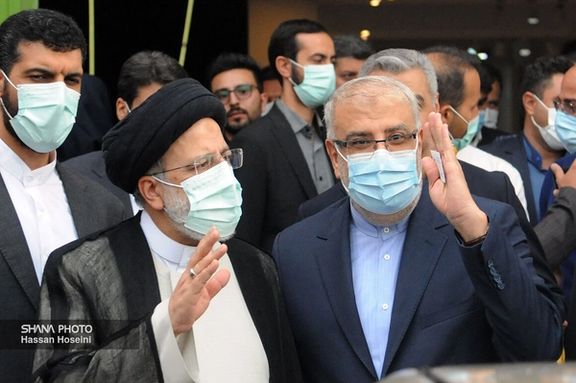
Stressing the significance of gas injection for both maintaining current production levels and increasing future production, Afazeli said that Iran’s enhanced oil recovery projects are not implemented due to a lack of know-how and insufficient capital. “Firstly, we lack the necessary technology for enhanced oil recovery. Secondly, and more importantly, we lack the capital required for these projects,” he said.
He bemoaned the fact that currently a significant portion of the produced gas is wasted in the residential sector due to the absence of consumption optimization.
Afazeli referred to North Pars Gas Field -- one of the biggest independent gas fields of the world located some 120 kilometers southeast of Bushehr province in water depths of 2 to 30 meters in the Persian Gulf. The field has the potential for increased gas extraction and injection. “For instance, with an investment of approximately $4 billion, North Pars can be brought into operation to extract and inject gas," he said. He warned that “without gas injection and pressure maintenance in the coming years, Iran will face a daily decrease of around 20 to 25 million cubic meters in gas production.”
While he said current production and extraction is 600 million cubic meters of gas per day from South Pars, he warned that "it is certain that there will be a decline in production starting in a few years”. He suggested that to enhance recovery in oil and gas fields, "we need an investment of $80 billion, and this capital is contingent on cooperation with the world,” referring to the regime's economic and political isolation on the global stage.
His remarks came as a confirmation to an Iran International article which warned that without re-injecting natural gas into oil deposits, some fields might become unproductive, leading to substantial economic losses for the country's oil sector.
Reports from Iran's Ministry of Oil and the US Energy Information Administration indicate that 80 percent of Iran's oil production comes from aging fields facing pressure drops, resulting in an annual production decline of eight to 10 percent.
To prevent a rapid decline in oil production, Iran needs to re-inject nearly 300 million cubic meters of gas per day (mcm/d) into its old oil deposits. However, the latest available official data reveals that the actual daily gas re-injection in 2018 was less than 37 million cubic meters. The situation must have deteriorated even further in the past five years, as gas production rapidly declines.
The semi-official Fars news agency reported in June that only 10% of the required gas is being re-injected into the aging fields currently, reflecting a significant decline in gas re-injection to under 30 mcm/d. This gas deficit poses a severe threat to Iran's oil production and requires urgent attention to avoid economic repercussions.
Iran’s oil-dependent economy has already been in decline for at least a decade. According to Vahid Shaghaghi Shahri, an economics professor, Iran's economy in 2010 was roughly on par with the economies of Saudi Arabia and Turkey. In contrast, he said that “over the past 10 years, due to sanctions and domestic economic challenges, Turkey's economy has grown by over two-fold in comparison with that of Iran, and Saudi Arabia's economy has surpassed Iran by more than 35 percent.”
Saudi Arabia’s GDP has grown from $200 billion to more than $800 billion in the past 20 years, while Iran has been subjected to international and US sanctions with its energy and non-oil sectors struggling to stay afloat, amidst the regime's ongoing nuclear program.
By the most optimistic estimates, Iran’s GDP is less than $250 billion, down from $480 billion in 2016, and even Iraq, with its internal problems, has caught up with its much larger neighbor because of relentless and rising volume of oil exports. Non-oil producing Turkey has long surpassed Iran by more than $800 billion GDP.
Iran has become a small and insignificant oil exporter since the United States imposed crippling third-party sanctions on its energy and banking sectors in 2018, when former President Donald Trump withdrew from the JCPOA nuclear deal, demanding major concessions from Tehran. Rather than scale back its nuclear program, the regime has instead continued to prioritize its military and nuclear budget over its ailing economy, in spite of sitting on one of the world's largest gas fields.
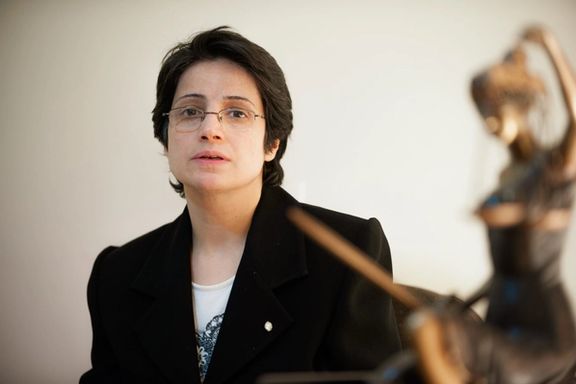
Iranian rights activist Nasrin Sotoudeh has won the Alice Schwarzer Foundation's 2023 Heroine Award in recognition of her unwavering advocacy for women's rights.
The foundation described Sotoudeh as the "Nelson Mandela of Iran" and emphasized her significant role as a human rights activist, Iran International’s correspondent Ahmad Samadi reported..
The Mayor of Berlin Kai Wegner praised Sotoudeh's efforts, stating, "Nasrin Sotoudeh is one of these women - and a hero. We in Berlin, as a city of freedom, show our solidarity with the courageous women in Iran who are fighting against the veil requirement and for women's rights."
Alice Schweitzer, director of the Schweitzer Foundation and an influential journalist and feminist, discussed her 1979 visit to Iran and highlighted how oppressive the hijab requirement was. In the Iranian theocracy, veils are more than just pieces of fabric, they symbolize political Islam, she asserted.
Women's rights activist Mansoureh Shojaei accepted the award on behalf of Sotoudeh and highlighted how Iranian women reject mandatory hijab and continue to fight against it.
Before her incarceration, Sotoudeh recorded a video message expressing her intention to dedicate the award to Armita Geravand.
Sixteen-year-old Armita died on October 28 after spending about a month in coma following a violent encounter with hijab enforcers at a Tehran subway station. Nasrin Sotoudeh was arrested at her funeral on October 29th.
Besides being named one of Time's 100 Most Influential People of 2021, Sotoudeh has received many awards including the Sakharov Prize, the Robert Badinter Award and the Right Livelihood Award widely known as the “Alternative Nobel Prize”.
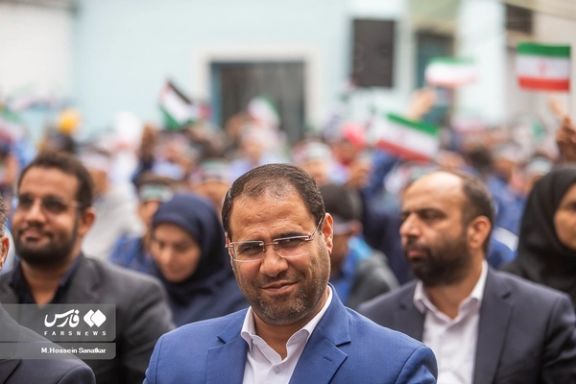
Iran’s Education Minister Reza Morad Sahraei said "textbooks must be differentiated for girls and boys, and modesty must be institutionalized throughout society."
He added that the Islamic Republic does not accept "Eastern views" of women and girls, nor does it accept "feminism", which he deems "perverted”, in comments which come amidst tightening hijab and chastity laws in Iran.
His comments were criticized by a former cabinet member. Former deputy of Iran's Ministry of Education Ibrahim Saharkhiz said gender cannot be a factor in mathematics, science, and literature, highlighting there are greater challenges in the regime's education system like its mass teacher shortage "of 300,000 teachers [which] must be addressed first, then the gender issues of students."
He was not alone in his criticism which swelled on social media. In the wake of the Women, Life, Freedom protests, a growing number of men and women in Iran are speaking out against the Islamic Republic's crackdown on hijab and women's freedoms.
Iranian journalist Maryam Lotfi, wrote on her X account: "No matter how much some families try to reduce gender stereotypes in their children, the educational system undermines their efforts.”
Sahraei responded to the criticisms on Monday, stating: "The social needs of girls and boys are different from each other, and religious and educational books are different in some cases; as well as the needs of girls' and boys' schools."
The regime’s attempt to implement a gender-segregated curriculum follows the women-led uprising which began in the wake of the death of Mahsa Amini, which saw thousands of female students chanting slogans against the government and tearing photos of Iran’s current leader Ali Khamenei and Ruhollah Khomeini, the founder of the Islamic Republic.
Despite the headway, neither the United States nor its allies have imposed sanctions on the plant's owner, JSC Alabuga, or its associated companies, the Institute for Science and International Security said in a report report.
Iran began supplying hundreds of kamikaze drones to Russia in mid-2022 that have been extensively used against civilian targets in Ukraine.
The report said a mid-September satellite image showed that new construction at the plant "directly" correlated with a leaked building floor plan that the Washington Post shared with the institute earlier this year.
The building, according to other leaked documents, will be used for the mass production of Iran's Shahed-136 that will include improving Iranian fabrication processes "and ultimately advancing the drone's capabilities," the report said.
"With winter fast approaching ... Russia can be expected to accelerate its Shahed-136 attacks against Ukraine's vital energy infrastructure, causing brutal living conditions for the civilian population," the report said.
"A key overdue step" is for Washington to sanction Alabuga and its associated companies, the report continued. The United States and its NATO allies have already imposed sanctions on individuals and entities engaged in supplying Iranian drones to Russia.
Ukrainian President Volodymyr Zelenskiy on Sunday warned his country to prepare for Russian strikes on energy infrastructure. Last winter, Russia unleashed waves of such attacks, prompting rolling blackouts.
The plant is located 500 miles (800 km) east of Moscow in the Tartarstan Republic.
The White House in June said Russia and Iran appeared to be deepening their defense cooperation and that in addition to supplying drones, Tehran was working with Moscow to produce Iranian drones in Alabuga.